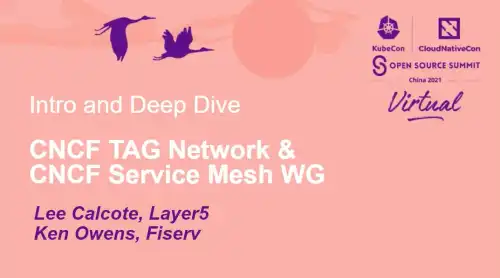The CNCF Technical Advisory Group for Network Co-Chairs Lee Calcote and Ken Owens gave a presentation entitled Intro and Deep Dive into CNCF TAG Network and CNCF Service Mesh Working Group at KubeCon China 2021.
With the rise of microservice-based distributed systems, networking has never been more important in ensuring the smooth operation of cloud native deployments. Cloud native architectures call for horizontally scalable, distributed systems design with microservices proliferated from Cloud to Edge. Technical Advisory Group (TAG) Network’s objective is to enable widespread and effective development, deployment, and operation of resilient and intelligent network systems in cloud native environments, keeping an eye on the needs of workloads, developers who design them, and operators who manage them.
Lee Calcote (@lcalcote) is an innovative product and technology leader, passionate about empowering engineers and enabling organizations. As the founder and CEO of Layer5, he is at the forefront of the cloud native movement. Ken Owens (@kenowens12) is the Vice President, Cyber Cloud Security Engineering at FISERV. Owens is a technologist and an innovator with more than 20+ years of experience in a plethora of technologies and has been championing the cloud native movement for more than a decade now.
As an introduction to TAG Network, Owens describes the group’s core objectives and reasons for its formation, summarized below:
- Listening to ideas and collaborations
- Assisting and attracting projects
- Building communities and providing impartial stewardship
Calcote and Owens are frequently asked a common question “Is it important for the organization to be a part of CNCF to participate in the TAG Network group?”. Owens emphasizes that anyone can participate, regardless of whether or not their company is a CNCF member organization. It does not require any payment and is an open-source effort in its spirit.
CNCF TAG Network Projects and various stages they go through:
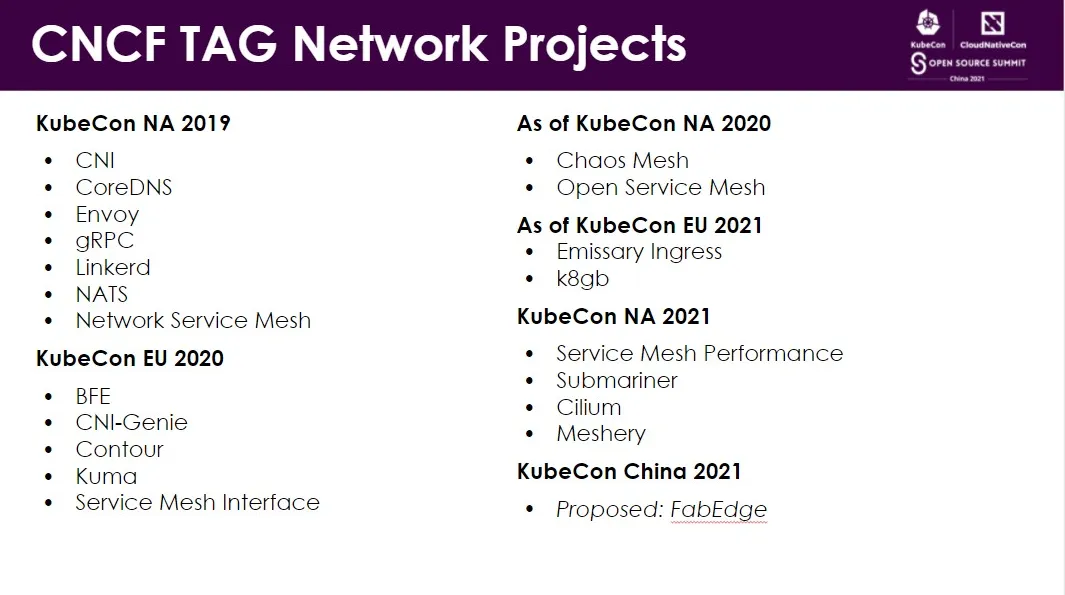
One of the important goals of the TAG Network is to identify the unique projects that want to participate and shepherd their journey through CNCF project levels. Project-fit and the process of assessment for inclusion in the CNCF require your project to be on terms with the following essential traits:
- Uniqueness
- Problem it solves
- Value it brings to the community
- Market demand
- Diversification
Creating and stewarding any one of these projects is a significant undertaking. The project's maintainers pitch the project and explicate how their project meets the above traits.
You start in a sandbox and work your way up to an incubation area once you've demonstrated a fundamental interest and understanding of the space, as well as some adoption. To graduate, the project must satisfy the required traits, be open-source, provide value and solve a problem effectively. We don't want to promote a CNCF project that is solely driven by one source. Diversification is crucial to the core of any CNCF project. Owens shared a subtle analogy, "a truly open source project is one in which contributors belong to the companies A+B+C...Z instead of just company A"
Working Groups and papers, and how they work.
- Universal Data Plane API and Service Mesh WG are the two working groups stewarded by TAG Network.
- They utilize Kubecon to educate about the functioning of working groups.
- Whitepapers and publications are carried out by working group members. A Recent publication was published in the IEEE Bridge magazine, entitled Analyzing Service Mesh Performance.
- Further goals include getting into the IEEE Communications Society and publishing an article entitled Techniques of Service Mesh Optimization.
The majority of the more detailed activities occur in the CNCF Service Mesh Working Group - a subgroup of TAG Network. The deep-dive unveiled many individual initiatives, the majority of which have a common thread: Meshery. Meshery is the cloud native management plane that enables the adoption, operation, and management of workloads.
It's a Meshy world out there! As the ubiquity of service meshes unfolds and they become a commonplace for any cloud native or edge environment, so does the need for vendor and technology-agnostic interfaces to interact with them. Calcote gives us a walkthrough of two Service Mesh Specifications:
- Service Mesh Interface (SMI): SMI focuses on the interoperability of the various features of a service mesh.
- Service Mesh Performance (SMP): SMP tries to make it uniform and succinct the way you characterize the performance of cloud native infrastructure with a focus on service meshes.
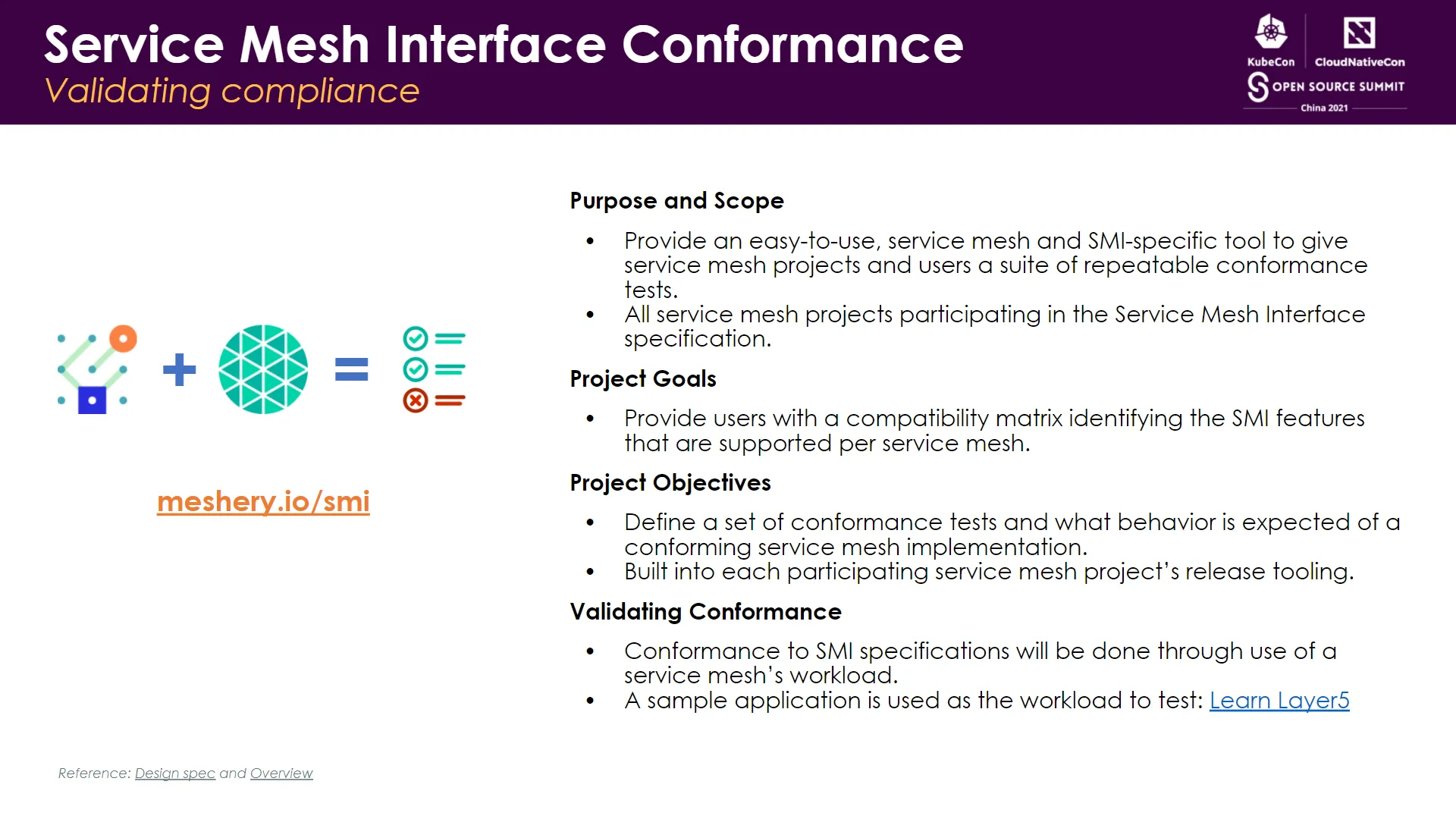
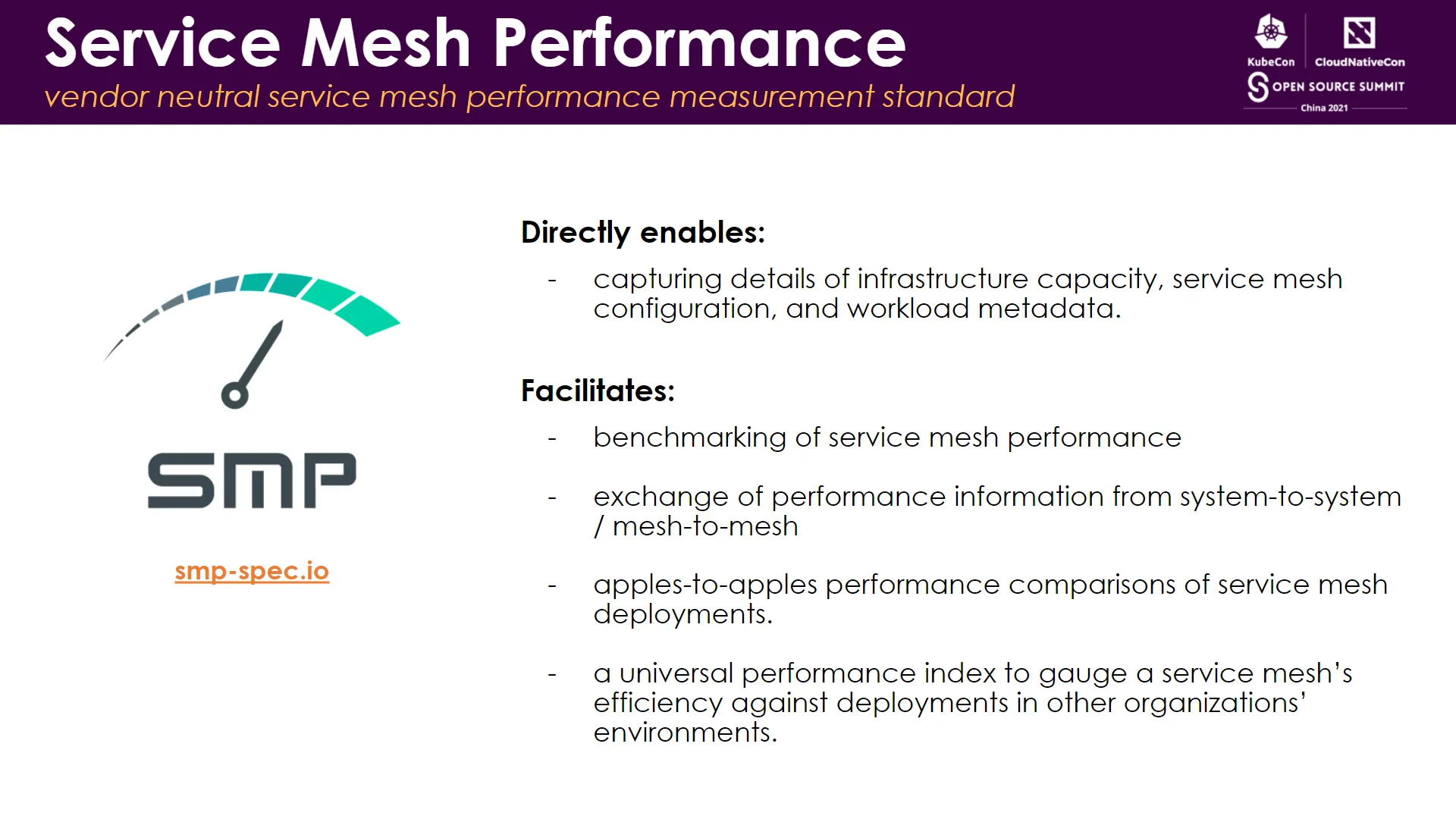
Owens and Calcote also discuss Service Mesh Patterns and Service Mesh Catalog. These patterns promote the reuse of best practices, are service mesh agnostic, and also help in behavior analysis. A circuit breaker test is a good example. If something goes wrong in your network be it a node failure, router failure, etc., then it helps you identify the point of failure as well as gets your network running quickly.
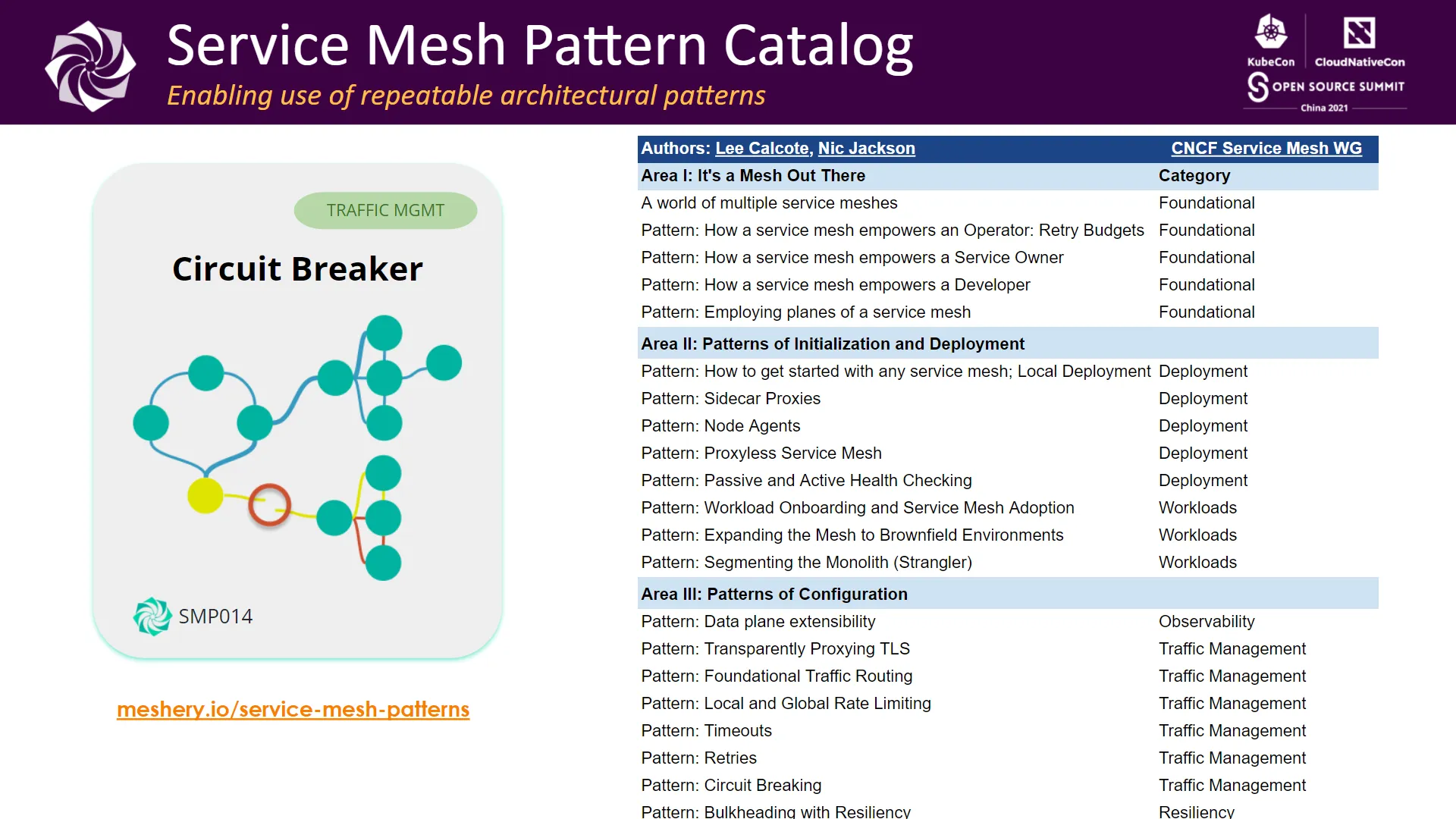
Talking about distributed systems, we come across the problem of distributed analysis. In this talk, the TAG Network co-chairs help us understand this problem and why we must worry about it.
- Many performance characterizing tools are limited to single instance load generators. This limits the amount of traffic and the variety of behavioral analysis.
- Distributed load testing in parallel poses a challenge when merging results without losing the precision we need to gain insight into the high tail percentiles.
- How to model your service mesh topology and optimize for your ideal configuration in context of how much you value properties of resiliency, performance, throughput, latency, and so on before deploying to production.
This brings us to Nighthawk and Meshery. Together they help produce robust, distributed and scalable services. Distributed load testing offers insight into system behaviors that accurately represent real world behaviors of services under load as that load comes from any number of sources.

Calcote and Owens packed a great deal of information in this talk. If you are passionate about Cloud Native Networking and Service Meshes, then this talk is definitely worth your time. Find the recording below. The presentation slides are available here.

